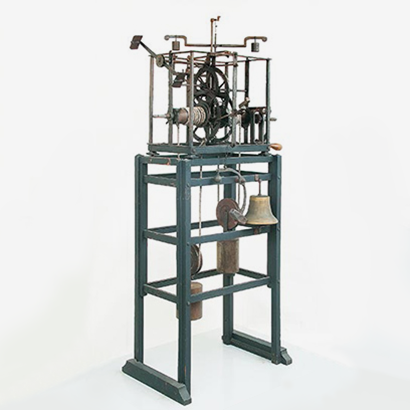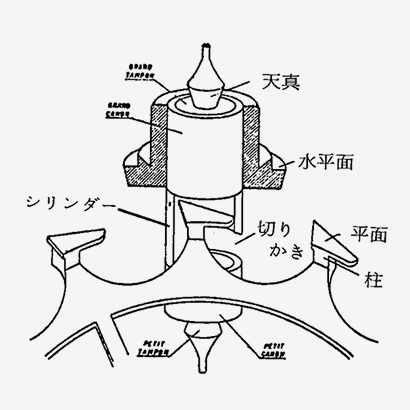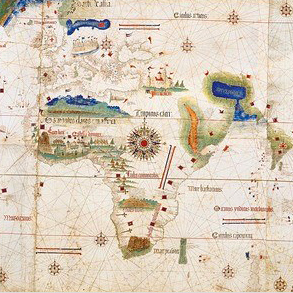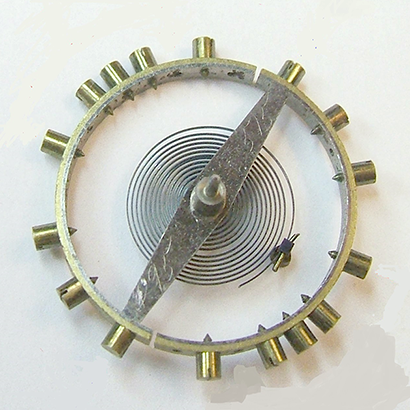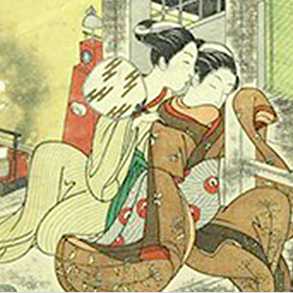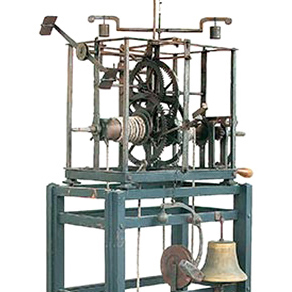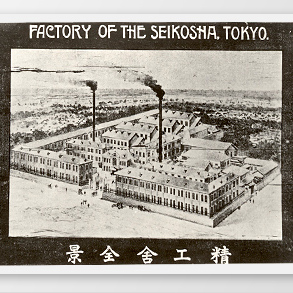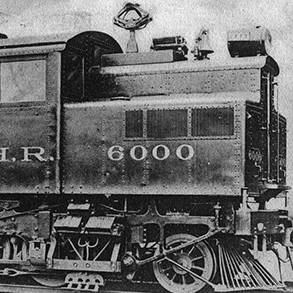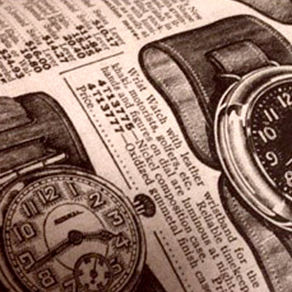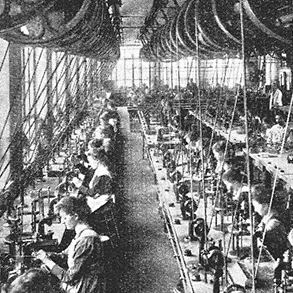The Quartz Crisis damaged the timepiece industry in Switzerland. Then, the industry recovered.
Postwar Reconstruction of the Japanese Timepiece Industry

After the war, the Japanese timepiece industry was largely behind Europe and the United States. The Ministry of International Trade and Industry at the time sponsored a watch competition from 1948 that examined quality tests focused on properties such as the accuracy and stopping of watches. The competition moved the entire Japanese timepiece industry into an environment that encouraged competition for better quality. By about 1955, the overall level of the Japanese timepiece industry improved significantly. By 1960, most of the domestically manufactured watches reached world standards. The best watches improved to the level of the advanced watch countries.
Beginning of the Electronics Era
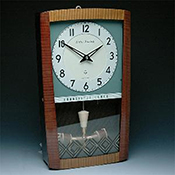
While maintaining its constant work to improve the accuracy and quality of mechanical watches, Seiko was inspired by American manufacturers and took on the challenge of developing an electronics technology capable of controlling time with higher vibration by changing the power source from springs to batteries and combining transistors and quartz with coils.
A transistor is a device that amplifies electric signals by connection to semiconductors. In 1960 Seiko commercialized the “Sonora,” a transistor clock that improved accuracy with a transistor pendulum. Next came the commercialization of the “Cellstar,” a portable tabletop clock that applied the same mechanism with a transistor balance, in 1962.
Seiko also focused on the development and manufacture of quartz clocks at the forefront of electronics. Quartz master clocks for broadcasting stations were commercialized from 1959 and quartz master clocks for ships followed from 1962.
Suwa Seikosha also launched the “59A Project” for the development of new watches other than mechanical watches. This led to the development of the world’s first portable quartz crystal chronometer, a timepiece used in the Tokyo Olympic Games. Also in 1963, Suwa Seikosha participated in the small crystal clocks division of the observatory competition in Switzerland for the first time.
Success of the Quartz Timing in the Tokyo Olympic Games
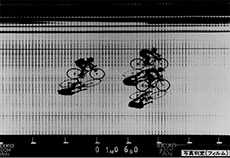
Seikosha, Daini Seikosha, and Suwa Seikosha each allotted development resources to the Tokyo Olympic Games of 1964. Together they developed 36 leading-edge measuring devices designed for different competition rules and venues. Time had to be measured in 1/100th-second increments in competitions where time records had to be kept for world records such as track and field and swimming, as well as in competitions such as cycling, horse-riding, sailing, and canoeing. Quartz measurement devices were developed for those competitions as devices with accuracy levels presumed to be higher than required.
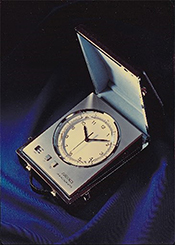
As a result, quartz measurement/electric time measurement devices such as portable crystal chronometers, the world’s first crystal oscillating digital stop clock, electric time-measurement devices, printing Timer I/II/III models, and 100-frame photo-finish devices were developed and used for many competitions.
Thanks to these clocks, the Tokyo Olympic Games became the first-ever Olympic Games in history to successfully measure highly accurate times using quartz timepieces in the main competitions.
Release of the World’s First Quartz Watch
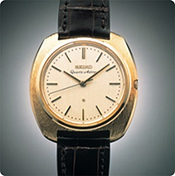
Both Seiko of Japan and CEH of Switzerland submitted quartz wristwatch prototypes to the Neuchatel Observatory Competition in 1967. Switzerland and Seiko competed fiercely for to develop the world’s first commercialized quartz watch in ensuing years. In December of 1969, Seiko released the “Astron,” the world’s first quarts watch.
This was a victory, but only by a small margin. Bulova, Universal, Omega, CEH’s Rado, and several other companies exhibited analog quartz watches at the BASELWORLD in April of the following year.
Spread of the Quartz Watch and Intensification of the Price War
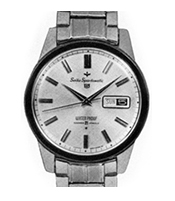
The brand value and name recognition greatly improved when the timing team accomplished their duties as official timers for the Tokyo Olympic Games without any measurement mistakes. Best-selling products such as the SEIKO 5, with its big reputation for self-winding and waterproof features, made Seiko’s products famous around the world, along with the slogan “Seiko of the world.” Overseas distributors and subsidiary networks expanded rapidly, mainly in Europe, North America and Asia.
By 1971, exports accounted for half of the total 14 million Seiko watches sold. By 1978, exports accounted for 2/3 of the total sales of 19 million watches.
Meanwhile, Seiko further improved its quartz technology. In 1973 it released the world’s first 6-digit display digital watch composed exclusively of electronic technologies, with no mechanical parts. This was a groundbreaking low-power product capable of displaying seconds on a digital display.

The digitalization of watches brought new demand, the development of new markets in regions such as Asia and Latin America, and changes in the production system for watches and other industries entering the watch industry.
Sales of watch movements to other companies started from the end of the 1970’s to the early 1980’s. Cost reductions through mass production rapidly progressed as watch part manufacturing began in Hong Kong, Taiwan, and China. This affected the price range of the entire watch market and intensified the price war for watches of both types, quartz and mechanical, around the world.
Blow to the Swiss and American Timepiece Industries
In 1979, quartz watches accounted for about 55% of the 60 million watches produced in Japan over the year (analog and digital were about half and half). Quartz clocks accounted for about 50% of the total production of 44 million clocks, and electronic technology (battery type or AC electric type) occupied the remaining 80+%. In 1980, the total number of timepieces produced finally surpassed that in Switzerland, a timepiece kingdom, making Japan the top manufacturer in the world.
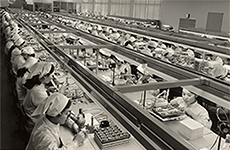
As many of these watches were exported, Swiss and American watch brands and manufacturers tied to tradition were slow in responding to the mass production of watches and introduction of quartz watches. They suffered a devastating blow as a consequence. For example, exports of watches from Switzerland in the early 1980’s dropped to half the levels recorded in 1974, their peak year for exports.
In the United States, Waltham was acquired by a Japanese company. In Switzerland, the soaring price of the Swiss franc, rises in production and raw material costs due to the oil shock, rises in labor costs, etc. all occurred at the same time. Watch sales sharply declined, forcing many watchmakers out of business.
According to one set of estimates, the number of Swiss watch companies dropped from over 1,600 in 1970 to fewer than 600 by the middle of 1980’s and the number of employees in the industry plummeted from 90,000 in 1970 to 33,000 in 1984.
Switzerland and the United States used to make pin-lever type watches called Roskopf watches to support their timepiece industries. This whole field was destroyed by the low-priced precision of the quartz watch.
The Swiss timepiece industry originally adopted horizontal division of labor as a manufacturing method. Many timepiece manufacturers worked on a small production scale for individual brands and parts. Small and medium-sized independent family businesses with traditional technologies manufactured parts for companies or brands of the same groups. The whole operations were coordinated by cooperative associations.
No corporate group had taken the lead even by the late 1970s. Logical cohesion was therefore lacking in both production systems and marketing. The positive response to advanced technologies for electronics was delayed as a result, along with organizational and strategic responses of the industry as a whole.
A small number of Japanese manufacturers expanded their markets with logical mass production systems and concentrated marketing strategies, regardless of the watch types (quartz or mechanical) they produced or the price ranges they offered. Although the yen was stable against the dollar, the rise of the Swiss Franc against the dollar hit the Swiss industry hard.
Reorganization of the Swiss Timepiece Industry and the Appearance of Swatch
Switzerland responded to this adversity with a new organization and strategy.
According to a plan hatched by Nicolas G. Hayek, a consultant in a partner bank, the Swiss watchmaking industry established a new organization in 1983 by merging two financially troubled groups: SSIH, a group of major companies including Omega and Tissot, and ASUAG, a group including Longines and Rado. The newly formed organization was called SMH.
The aim of this merger was the logical reconstruction of a manufacturing system and reexamination of a new marketing strategy. SMH, a starting point to revive the lost volume zone, decided on the innovative “swatch strategy” of providing the Swatch, a cheap 50 francs disposable analog watch that could be worn as a fashion item.
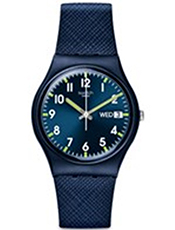
The Swatch was released in 1983. Through skillful marketing and advertisement promotion, SMH sold a cumulative total of 23 million pieces in 1986 and 100 million pieces in 1992. Annual sales rose to 30 million pieces in 1993.
The Swatch was innovative not just as the product of a logical manufacturing system mass produced at reduced cost with fewer parts, but also as a fashion item. The Swatch sold by the season and was marketed globally with no regionality. “Swatch shops” appeared in the centers of fashionable international cities all around the world and succeeded in mass sales through effective promotion. This created a business model for cheap stylish watches with high added value.
With the profit from this mass production effect, they were able to restart their factories and recreate employment. The base of the Swiss timepiece industry was revived.
Logical Counter Strategy by SMH
Another reformation has been the logical and efficient reorganization of the entire group with its manufacturing functions and brand positioning to restructure and rearrange the organization and personnel.
First, all brands that independently manufactured and assembled movements, such as Omega and Longines, have consolidated all of their processes into ETA (the former Ebauches). ETA now supplies the movements to all SMH brands.
ETA has condensed the types of movement as common parts for use among all SMH brands, promoted sales to watchmakers in Switzerland and other countries outside the group, and intensified the manufacturing process to reduce costs and expand sales efficiently.
Also, taking the duplication of brand positioning into consideration, SMH has clarified the differences between the concepts of the brands through selection and concentration. By narrowing down the number of models while repositioning them complementarily, it has managed to streamline both production and marketing.
Omega, for example, adopted global brand marketing strategies in the marketing for Swatch by drastically reducing the numbers of models, highlighting the individuality and added value of the brand, and producing a universal promotion model to express a uniform image.
As a core brand within the group, Omega was mainly given the resources. SMH concentrated mechanical movements with high added value and excellent exterior designs on Omega while performing skillful promotion by focusing on the history and heritage of the brand and using famous brand ambassadors. The skillful “selection and concentration” strategy of both the production system and brand marketing by the new large group won the trust of the partner bank group in Switzerland, bringing in a huge influx of new loans and gradually restoring the entire industry.
Afterwards, SMH purchased a steady succession of parts subcontractors while establishing a more logical production system globally through international division of labor in China, Thailand, etc.
Meanwhile, distributors/channels divided by brands around the world were consolidated into single agents/local subsidiaries per country. These country subsidiaries handled all functions of marketing, advertisement, IT, finance, logistics, after-sales service, etc. for multiple brands while promoting global brand strategies.
After the Plaza Accord of 1985, Japanese manufacturers rapidly lost their competitiveness due to the rapid weakening of the yen and strengthening of the dollar. The Swiss franc, meanwhile, turned around. The exchange rate advantage for the Swiss manufacturers was another important factor for the promotion of reconstruction.
Revival of Swiss Mechanical Watches
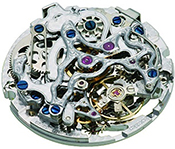
Even highly precise luxury mechanical watches have a time difference of several seconds per day. Mechanical watches lost their pre-eminence in time-telling precision when the quartz watch was born, but they were reevaluated as a luxury items with unique qualities all of their own. A brand could succeed in the high end of the luxury watch brand business through the effective promotion of brand image based on the watchmaker’s long history and traditions, the artistic craftsmanship of artisans who polished, sculpted, and bejeweled the watches by hand, elaborate and complicated structures/functions unique to mechanical movements, and high added value of advanced technologies such as new mechanisms and materials for the movements.
Sales of mechanical watches with high added value increased year by year globally due to the steady prosperity of western economies and strong demand in emerging countries (BRICs). In the 20 years from 1991 to 2011, the total export value of Swiss watches increased by about four times.
Reorganization of Major Watch Groups
With the significant expansion of the timepiece industry fueled by growing demand for luxurious mechanical watches, the acquisition and reorganization of watch brands by major groups in the luxury field accelerated further from 1995 onward.
In 1992, SMH acquired Blancpain, reputedly the world’s oldest watch brand. After SMH changed its name to the Swatch Group in 1998, it acquired luxury brands such as Breguet, Jaquet Droz, and Glashütte Original. The Vendome Luxury Group, which included the Cartier, Mont Blanc, and Tobacco brands, was reorganized under the Richemont Group in 1988. Since then, Richemont has acquired watch and jewelry brands such as Piaget, Vacheron Constantin, Panerai, IWC, Jaeger-LeCoultre, and A. Lange & Söhne, one after another.
The world's largest luxury goods group, LVMH, also began investing in timepiece manufacturing and sales from 1999. LVMH acquired Zenith, TAG Heuer, Hublot, Bulgari, and many other famous luxury brands, reorganizing them within its large capital group.
These groupings of major brands also encouraged reorganization through vertical integration of watch distribution networks in the 2000’s. The brands sought to improve the quality of their points of sale, the space where they connect with customers, in order to gain large profit by retailing their products themselves.
Major groups imposed strict conditions on traditional retailers, such as purchase and sales norms, display space specifications, and methods for handling every brand. They narrowed their focus to only stores that comported with their brand images while increasing the number of directly operated boutiques with luxury images.
In this way, the timepiece business in the luxury field became a competition in which the value chains were strictly controlled at every stage from manufacturing to connection with the customer in the store.
De Facto Standardization of Quartz by Seiko
Seiko, who developed the world’s first quartz watch, opened a patent to the public to make the quartz technology the de facto standard. As Seiko had planned, other companies entered the quartz watch market using quartz technology. Then, following competitors in the same domestic market, Seiko started an external sales business of the regular quartz movements. The quartz watch spread explosively all over the world as a result. People anywhere around the world can always know the exact time by wearing a quartz watch.
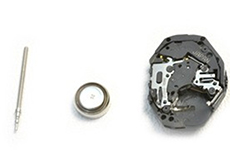
As quartz watches became widely used and the price sharply dropped, the timepiece industries in Switzerland and the United States suffered a big blow. At the same time, Seiko made a large contribution by economically providing the correct time to people all around the world.
Seiko, as the leader who pioneered quartz in the industry, has continued to spur the evolution and development of electronic watch technology by developing and introducing value-added quartz products such as high-precision twin quartz, multi-functional products for televisions/voice recorders/computers, and kinetic and thermic power systems eliminating the need for battery replacement.
The quartz technology Seiko developed and generalized has been used for nearly 50 years in products such as tuning fork crystal oscillators, CMOS-ICs, open step motors, and digital seven-segment liquid crystal displays. The technology has been truly epoch-making.

The world’s first tuning fork crystal oscillator, especially small and excellent in shock resistant, is used daily in a wide range of fields. The oscillator is widely used, for example, as a key component of quartz crystal devices and a base component for counting accurate time for devices such as IT equipment (PCs, mobile phones, digital cameras), industrial products (automobiles), standard of network signals, and key telecom communication equipment for televisions. The oscillator is also used as a sensor to capture movements and changes of speed. The high-frequency, high-precision caesium atomic clock currently designated as the standard for world time uses the crystal oscillator to constantly adjust and correct its oscillation frequency.
As shown in the examples above, quartz technology is not limited to watches. Quartz serves as a fundamental technology for life in the computer age in devices of every ilk, from home IT components to infrastructure for the global network society.
References
References
・“History of Seiko Watches in the Postwar Period” The Seiko Museum
・“History of the Japanese Horological Industry” Japan Clock & Watch Association Website
・“Seiko Epson Corporation Website Technology / Innovation Core Technology”
Seiko Epson Corporation Website
・A Business History of the Swatch Group
Pierre-Yves Donzé Sekaibunka Publishing Inc.
・“The World Strategy of the Swiss Timepiece Industry” JETRO Geneva Office Website
・“Time to Change” Contemporary Challenges for Haute Horlogerie
Luana Carcano, Carlo Ceppi Kadokawa Gakugei Publishing


